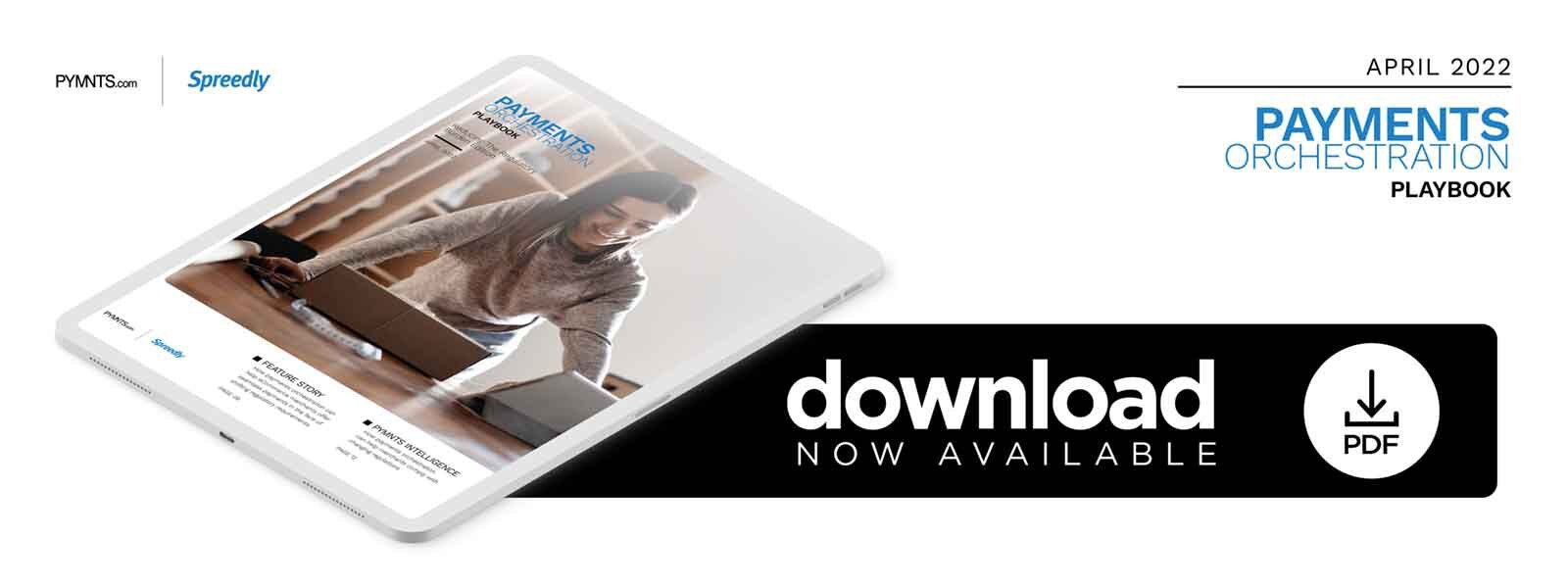How Payments Orchestration Can Help eCommerce Merchants Offer Seamless Payments In The Face Of Shifting Regulatory Requirements

To be recognized versus rivals, eCommerce brands must offer diverse and seamless payments, in a safe and compliant manner. In the latest “Payments Orchestration Playbook,” Yulia Drummond, CEO of Voda Swim, explains the role of payments orchestration in helping online merchants strike this balance.
Consumers have come to expect easy, personalized payment experiences, especially when shopping online.
This means eCommerce merchants must find ways to stand apart in an increasingly saturated market by providing a diverse selection of swift payment solutions, said Yulia Drummond, CEO of eCommerce swimwear brand Voda Swim. The company currently supports a range of payment methods at checkout to meet its customers’ needs, including mobile wallets such as Google Pay and Facebook Pay.
“More and more customers want conveniences,” she said in a recent PYMNTS interview. “They want an easy checkout process that is seamless, and they want to pay with a payment method that is simple and that they [have come to trust] over the years.”
Matching consumers’ changing payment needs while ensuring that payments are secure can be tricky for merchants, as their users continue to ask for a rising number of diverse payment solutions. This is especially the case as governments enact digital payment regulations aimed at protecting transactions and users’ personal and financial information, such as PCI DSS and the EU’s PSD2 law.
Balancing Seamless Payments With Compliance Requirements
Offering consumers access to their preferred payment solutions means that merchants must work with an ever-growing list of payment service providers to ensure they can support multiple tools. eCommerce merchants must also be sure these transactions remain compliant with digital payment regulations, however, as lawmakers within the U.S. and the EU look to increase consumer protections while also making way for digital growth. Voda Swim’s partnership with Shopify helps the company navigate these changing compliance requirements, Drummond explained, but meeting the compliance and seamless payment balance is becoming more critical for today’s merchants.
“I do see the challenges for some companies of making sure the payments are processed securely from beginning to end while handling different payment service providers,” Drummond said.
Finding technologies or industry partners that can help merchants easily manage their relationships with disparate payment service providers is key to remaining competitive as online payment regulations take shape across multiple markets. Solutions such as payments orchestration could play a key role in supporting these efforts by enabling companies to connect to their different payment partners more easily while also allowing them to manage the payment process on one platform.
“I do see how implementing payment orchestration helps ensure that the process is complete and without any issues for the consumer or the company,” she said.
Implementing payments orchestration or similar systems that easily support diverse options for customers while ensuring transactions can be processed smoothly and in compliance with changing regulations is set to become more important for merchants in the coming years. This is the case for eCommerce entities especially, as a higher volume of transactions is sure to take place through digital channels, making the ability to support easy, secure payments essential for online businesses as they seek to optimize customer conversion.
Meeting Next-Gen Payment Needs
Payment regulations will likely continue to shift in the next few years, especially as more consumers and businesses move online to conduct their daily transactions or meet other financial needs. This also means cybersecurity needs are likely to intensify, with lawmakers keeping a close eye on how information and payments data is shared, stored and protected.
“The bottom line is consumers need to be protected, and payments need to be secured,” Drummond said. “The payments process will continue to evolve in that direction, and the lawmakers will create laws to ensure this is done properly.”
Keeping pace with these regulations as well as consumers’ payment wants and needs must be top of mind for today’s merchants. Considering how payments orchestration could help them meet these needs more easily while remaining compliant with shifting laws is a must for businesses looking to keep customers engaged and protected.
